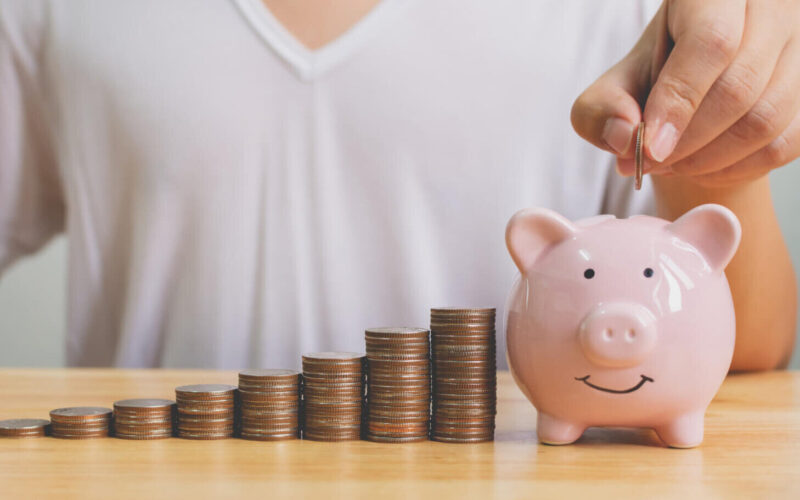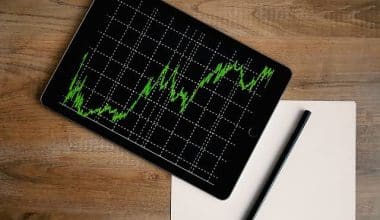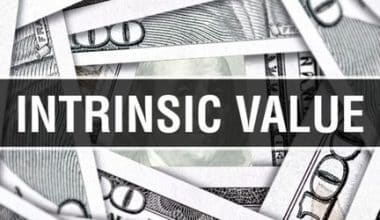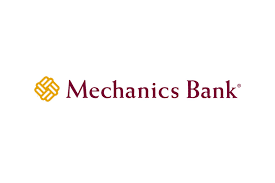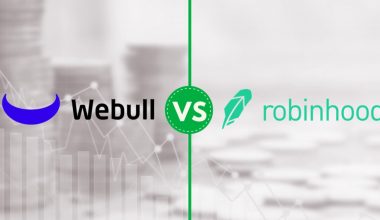Everyone loves an extra income and will not hesitate to consider any savings or investment opportunities that will increase savings, people would gladly jump into it. The high-yield savings account is ideal for anyone who desires to increase their earnings on their savings account. But then, there are tons of banks out there offering various classes of savings accounts to individuals and businesses. How do I identify the best high-yield saving account among these? Relax, Business Yield Consult through its financial experts had done the hard work. All you have to do is to go through the list compiled, consider the rates each account offers and begin your saving journey. We look at what a high-yield savings account is, analyze the rates, and present to you the best high-yield savings account in 2023. We also looked at the high-yield savings account calculator.
Best High-Yield Savings Account
When it comes to the best high-yield savings account, online savings accounts are usually the best. Why Is this so? Online savings are considered the best high-yield savings account because it offers interest at a higher rate than regular bank accounts. According to the recent research conducted by Business Yield Consult, the following offers high-yield interest rates on saving accounts. Our list begins with the lowest rates to the highest.
| NAME | APY RATES | FEE |
| Ally Bank Online Savings Account | 0.50% | None |
| Discover Bank Online Savings Account | 0.50% | None |
| Citizen Access Savings Account | 0.50% | None |
| Marcus By Goldman Sachs High-Yield Online Savings Account | 0.50% | None |
| Premium Online Savings Account | 0.55% | None |
| Barclays Online high_yield Savings Account | 0.55% | None |
| CIBC Bank USA Agility Savings Account | 0.57% | None |
| Alliant Credit Union High Rate Savings Account | 0.60% | None |
| Citibank Savings Account | 0.60% | None |
| Synchrony Bank Savings Account | 0.60 | None |
| Live Oak High-Yield Savings Account | 0.60% | None |
| Qountic Bank Savings Account | 0.65% | None |
| Lendingclub Bank Savings Account | 0.70% | None |
| Comenity Bank Savings Account | 0.75% | None |
| GO2Bank funds | 1.00% | None |
High Yield Savings Account Rates
The following are currently the best high-yield saving rates from the highest to the lowest.
#1. Comenity Bank Saving Account
To open a high-yield savings account with Comenity Bank, you need at least $100. This is the cost of opening the account. It has an APY rate of 0.75% which is relatively high compared to other banks but hey, each paper statement cost $5 and you will also be charged $15 for every official check.
#2. Lendingclub Bank Saving Account
The Lendingclub bank like Comenity Bank has an opening deposit of $100 with an APY rate of 0.70%. Unfortunately, the APY rate for Lendingclub only applies to the account with $2500 and above. However, regular interest applies to every account that holds up to $100 and if your high yield savings account must remain active, it must hold at least $5 in it.
#3. Qountic Bank Savings Account
The Qountic bank savings account also has a minimum deposit of $100, you will have to pay a $10 charge for subsequent withdrawals after six withdrawals have been made on a statement cycle. The Qountic bank also offers an APY rate of 0.65% on its account with zero maintenance fee.
#4. Synchrony Bank Savings Account
Synchrony Bank does not require a minimum deposit on its Savings Account. However, it offers an APY of 0.60% to account holders.
#5. Alliant Bank Online Saving Account
The minimum amount required to keep your account active with Alliant bank is $5, fortunately, this is also its minimum initial deposit. It offers an APY rate of 0.60% to customers. To earn interest with Alliant bank, you also need to ensure your account holds at least $100.
#6. CIBC Bank USA Agility
Although the CIBC bank offers an APY rate of 0.57%, it has a minimum initial deposit of $1000. However, to earn your 0.57% APY rate, you must have at least 1 cent in your account.
#7. Marcus By Goldman Sachs
Marcus By Goldman has an interesting offer to customers, it has a zero minimum deposit demand and also has no additional fee attached to it. Additionally, it offers an APY rate of 0.50%.
#8. Citizen Access Savings Account
Although Citizen Access has zero charges on its savings account, it has a very high initial deposit of $5000. Even with an APY rate of 0.50%, it is off-limit for someone who is just beginning savings.
#9. TIAA Bank
The Tia bank high yield savings account has a monthly $5 charge for any account that holds less than $25. Its initial deposit is also $25 with an APY of 0.50%. However, there is an exception with its $25 minimum deposit, the bank permit residents of Rhode Island $0 account opening.
High Yield Savings Account
Many people may disregard the earnings in savings accounts because it is relatively low, but unknown to them, this traditional earnings over time become significant. Take a look at this scenario. If Mr. Smith puts his $10,000 in a savings account with 0.15 percent APY, he will arrive at $15 per year. However, had Mr. Smith saved his money in a savings account with 1.5 percent APY, he would have had an interest of $150. Frankly, we all desire financial freedom and if all you need is a place to build your earnings steadily without losing them to risky investments, then the high-yield savings account is the best for you.
The competition in saving account rates skyrocketed thanks to traditional banks who in a bid to attract customers slightly increased their saving rates and introduced online banks, the result was the high yield savings account. But then, what is a high-yield savings account? Well, let’s find out in detail.
What Is High-Yield Saving Account?
A high-yield savings account is a type of savings account that offers greater interest rates than the standard savings account. It pays about 20 to 25 times the average for a conventional savings account. As much as every bank tends to make their savings account rates appealing to customers, online banks generally offer higher rates for a high-yield savings account.
What To Look Out For Before Choosing A High-Yield Savings Account
Having used a calculator to note that the difference in rates makes high-yield savings account better than a standard savings account, how do you Identify the best high-yield savings account or what to look out for when trying to save using this account? Before choosing a savings account, keep an eye on the following;
Interest Rates
What is the current rate of interest on the account? This is one of the things you must look out for if you want a savings account with a high yield. Rates on savings accounts are usually variable and can be modified at any time. However, some accounts will state that the current offered pricing is only valid for a limited time. Another thing to consider is whether the advertised rate is subject to minimum or maximum balance requirements and how frequently the changes in interest rates occur.
Annual Percentage Yield (APY)
The annual percentage yield (APY) is one of the most significant factors to consider when selecting a high-yield savings account. Although, the average is 0.6 some banks use rates below this average. The good thing about APY is that the higher your savings, the better your earnings.
Minimum Deposit Requirement And Initially Deposit
The minimum deposit requirement must also consider getting a high-yield savings account. Not all banks place a demand on the minimum deposits. Some banks do not require a minimum deposit for high-yield savings accounts. Find out if your bank requires a minimum deposit before saving your money with them. Also, look out for the initial deposits too. This is because certain banks also require your initial deposits must not to be less than $100.
Fees
Another great factor to look out for is whether or not the bank you wish to save with maintenance charges. Also, ensure your bank does not have additional charges such as a charge for having below the minimum requirement in your savings account.
How Frequently Rates Changes
Banks change their Interest rates for a variety of reasons. For instance, a bank can increase its rate to attract more customers, they can also decide to reduce it to fit into the economic situation. Find out how often the bank you intend to save in changes their rates.
How Often Rates Varies
Savings account yields are variable, which means they can vary at any time, in reality, it is not like CDs. The Interest rates of high-yield savings accounts are frequently adjusted by banks and credit unions for diverse reasons. Sometimes the banks may reduce or increase the APY on savings accounts as a result of economic situations or because they desire to attract more customers.
How Often Compounding Occurs
Banks can choose to compound interest monthly, quarterly, biannually, or annually. Although, when the compounding is done regularly, you gain from it. Unfortunately, some banks have options to compound less often than others.
Getting Access to Your Money
How easy is it to access your fund in cases of emergencies? Must you visit the banks to access your fund or are there further means of getting your money?
Minimum Balance
When comparing the minimum balance requirements of different high-interest savings accounts, think about how often you’ll need to access the money and if you’ll be able to keep the balance to earn the APY. Just as some banks demand a minimum deposit to create an account, some also place a demand on your balance before allowing you to earn with APY.
Withdrawal Options
Regulation D is a federal body that regulates withdrawals. According to its rule, the number of withdrawals from savings and money market accounts is limited to six times per month. Online transfers to other accounts, phone transfers, automatic transfers, overdrafts, and check or debit transactions are all included. Withdrawals or transfers conducted at an ATM or a bank in person do not count against the limit.
How does The High-Yield Savings Account work?
Just as the name implies, a high-yield savings account provides a higher interest rate on return than normal savings accounts. This simply means when your money is put into a high-yield savings account, it automatically begins to earn interest. The interest may be credited to your account on a monthly or quarterly basis. Additionally, your earnings compound over time, and this also increases your earnings too. As much as this sounds great, also note that the rate can be manipulated by your various banks.
Advantages Of High Yield Savings Account
The high-yield savings account has several advantages. Some of these are;
Savings Security
The federal government insures high-yield savings accounts at most banks and credit unions, ensuring that your money is safe.
Ease Of Accessibility
Banks that offer high-yield savings accounts usually have digital tools that enable you to access your fund with ease. Managing and accessing your fund is quite easy.
Compound Interest
Your interest compound to further boost your earnings. Daily compounding implies you’re earning money on top of the interest you’ve previously earned.
Higher Earning Rates
With your high yield account, you sure will earn more interest than a standard savings account.
Disadvantages of High Yield Savings Account
Even though there are benefits attached to this type of savings account, it also has disadvantages. These include the following;
Unstable Interest Rates
The high-yield savings account interest rates may be higher than other savings accounts but, it is an unstable rate that fluctuates without many regulations.
Limitation On WIthdrawals
Some banks limit withdrawals and transfers to six per month.
No Checks Allowed
Savings accounts normally do not allow checks to be written. You will be charged for checks
High-Yield Terms You Should Know
Annual Percentage Yield (APY)
This is the amount of interest an account earns over a year.
ACH Transfer
This is used when you wish to make small and regular payments online such as direct deposit, automated bill payments, etc. It’s normally free, but it takes at least one business day to complete.
Wire Transfer
This is the amount you pay to the bank if you intend to move your fund from one bank account to another.
Mobile Deposit
This encourages ease of transfer. Rather than go to the bank to deposit your check, you can scan a snapshot of the check with your mobile banking app and have the monies put into your account right away.
ATM networks
Depending on which bank you have, ATMs might be in-network or out-of-network. When you use an ATM that is not part of your bank’s network, you will almost certainly be charged a fee by both the ATM operator and your bank.
High-Yield Savings Account Calculator
The High-Yield savings account calculator assists anyone who intends to save in establishing a savings strategy. This simply means anyone can determine exactly how much you need to save in a high-yield account using the calculator to meet your goals by altering the input amounts.
How Does A High Yield Savings Account Calculator Work?
If you want to use the high yield savings account calculator, you will have to provide relevant information in each column as required by the calculator. The savings account calculator will then assess the future worth of your savings. The information required is as follows;
Current Amount Saved
This can be your total savings balance or the amount you put into a high-yield savings account when you first opened it.
Monthly Savings Amount
This requires you to enter the amount you expect to contribute to your high-yield savings balance each month. If you can’t save a certain amount every month, divide the annual estimate you anticipate contributing by 12 months.
ARR percentage
The ARR percentage column requires you to enter the current interest rates you are generating on your savings account.
Number Of Years
This is the number of years you want your savings to last.
Is it worth having a high-yield savings account?
High-yield savings offer daily growth of your money and minimal danger, but they are not the ideal method for long-term wealth accumulation. It is preferable to invest your money rather than continuously adding to your savings account because the rate of inflation may be higher than the yield you would eventually earn.
What do you mean by a high-yield savings account?
The definition of high interest savings accounts. In contrast to conventional savings accounts, high-yield savings accounts provide you a greater interest rate, allowing your money to grow even quicker while it is in your account. Annual percentage yield, or APY, is used to indicate the interest rate offered by these accounts.
How much will 10000 make in a high-yield savings account?
Depending on the state of the market, your earning potential changes. However, current rates are between 0.86% and 2.96%. You might therefore earn interest for the entire year between $86 and $296 as of right now.
What is better than high-yield savings?
The interest rate on certificates of deposit (CDs), a type of savings account with a set rate and duration, is typically greater than that on standard savings accounts. The interest rate on certificates of deposit (CDs), a type of savings account with a set rate and duration, is typically greater than that on standard savings accounts.
Does taxes Look at my high-yield account?
However, there is one thing to keep in mind: “In general, interest earned from a high-yield savings account is taxable.
Can you withdraw anytime from a high-yield savings account?
Consumers are permitted to withdraw or transfer money from a high-yield savings account up to six times per month without incurring any penalties.
Do high-yield savings pay monthly?
Daily compounding is common in high-yield savings accounts. Although most banks only deposit interest into your account once a month, this implies that you earn interest on your money every day. Over time, you end up with more money than you would if the savings account compounded monthly.
Conclusion
A high-yield savings account is a steady means of growing your savings. Additionally, it offers you three key things; protection for your savings, a steady interest that compounds over time, and insurance security. You won’t have to fret over losing your hard-earned money to insecure investment risk. Finally, make sure you are well-acquainted with the charges, fees, minimum deposits, APY interest rates, and withdrawal rules. This will help you settle for the best high-yield savings account to grow your savings account.
FAQs On High YIled Savings Account
Are there risks involved with the high-yield savings account?
The high yield savings account is associated with a low level of risk. The major risk associated with it is when the bank is not insured by FDIC or going against the FDIC guidelines and rules. This can be avoided though. To know whether your bank is insured by FDIC, Use BankFInd Suite to check this. You can also use the FDIC Electronic Deposits Insurance Estimator to be sure your money is safe.
What's the difference between a money market account and a high-interest savings account?
The money market accounts are a form of saving account with high minimum deposit requirements. It also has a high APY interest rate and gives account holders access to checks. A high-interest savings account, on the other hand, usually does not provide checks, albeit it does give a competitive annual percentage yield.
Do I pay taxes on high-yield savings account interest?
The Internal Revenue Service specifies that interest above $10 earned on bank accounts is taxable.
How frequently can I withdraw funds from a savings account?
The number of withdrawals allowed by financial institutions is normally limited to six per month according to Regulation D. This includes ATM withdrawals, online withdrawals, overdraft protection transfers, and telephone transfers. Once it is more than these, you will be charged for it. However, the Federal Reserve enabled providers to remove the cap on April 24, 2020, not all banks optioned to remove theirs.
- BUSINESS DEPOSIT ACCOUNTS: List of the Best Deposit Accounts in 2023 (Updated)
- JUNK BONDS: Definition & How To Invest In Junk Bonds
- Invest Money: The Best Way To Invest Money 2023
- How To Save Money Fast: 10 Best ways to saving money In 2023
- Save Money Live Better: 15+ Best Easy Hacks for Millennials in 2023
- BEST THINGS TO INVEST IN: Growing Your Investment Portfolio UK
- SAFEST STOCKS TO BUY: Long-Term Safe Stocks to Buy in 2023
- HIGH YIELD DIVIDEND STOCKS: Top 25 High-Dividend Stocks And How To Invest In Them
